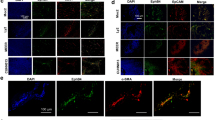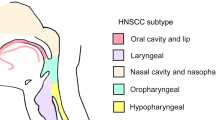Abstract
The diverse receptor-ligand pairs of the Wnt and frizzled (Fz) families play important roles during embryonic development, and thus may be overexpressed in cancers that arise from immature cells. Hence, we investigated the expression and function of five Wnt (Wnt-1, 5a, 7a, 10b, 13) and two Fz (Fz-2, 5) genes in 10 head and neck squamous carcinoma cell lines (HNSCC). In comparison to normal bronchial or oral epithelial cells, all the HNSCC had markedly increased mRNA levels of Wnt-1, 7a, 10b, and 13, as well as Fz-2. Moreover, the levels of Wnt-1, 10b, and Fz-2 proteins were also markedly increased in HNSCC, relative to normal epithelial cells. Treatment of one HNSCC cell line (SNU 1076) with anti-Wnt-1 antibodies reduced the activity of the Wnt/Fz dependent transcription factor LEF/TCF, and diminished the expression of cyclin D1 and β-catenin proteins. Blocking Wnt-1 signaling also inhibited proliferation and induced apoptosis in these cells. These results show that HNSCC cell lines often overexpress one or more Wnt and Fz genes, and suggest that the growth and survival of a subset of HNSCC may depend on the Wnt/Fz pathway. Hence, the Wnt and Fz receptors may be possible targets for immunotherapy therapy of this common cancer.
This is a preview of subscription content, access via your institution
Access options
Subscribe to this journal
Receive 50 print issues and online access
$259.00 per year
only $5.18 per issue
Buy this article
- Purchase on Springer Link
- Instant access to full article PDF
Prices may be subject to local taxes which are calculated during checkout






Similar content being viewed by others
References
Aoki M, Hecht A, Kruse U, Kemler R, Vogt PK . 1999 Proc. Natl. Acad. Sci. USA 96: 139–144
Behrens J, von Kries JP, Kuhl M, Bruhn L, Wedlich D, Grosschedl R, Birchmeier W . 1996 Nature 382: 638–642
Cadigan KM, Nusse R . 1997 Genes Dev. 11: 3286–3305
Hunter T . 1997 Cell 88: 333–346
Kim SY, Chu KC, Lee HR, Lee KS, Carey TE . 1997 Acta Otolaryngol. 117: 775–784
Korinek V, Barker N, Morin PJ, van Wichen D, de Weger R, Kinzler KW, Vogelstein B, Clevers H . 1997 Science 275: 1784–1787
Ku JL, Kim WH, Lee JH, Park HS, Kim KH, Sung MW, Park JG . 1999 Laryngoscope 109: 976–982
Landis SH, Murray T, Bolden S, Wingo PA . 1999 CA Cancer J. Clin. 49: 8–31
Leethanakul C, Patel V, Gillespie J, Pallente M, Ensley JF, Koontongkaew S, Liotta LA, Emmert-Buck M, Gutkind JS . 2000 Oncogene 19: 3220–3224
Miller JR, Hocking AM, Brown JD, Moon RT . 1999 Oncogene 18: 7860–7872
Ng JK, Tamura K, Buscher D, Izpisua-Belmonte JC . 1999 Curr. Top. Dev. Biol. 41: 37–66
Nusse R, Varmus HE . 1982 Cell 31: 99–109
Parkin DM, Pisani P, Ferlay J . 1999 CA Cancer J. Clin. 49: 33–64
Parr BA, Shea MJ, Vassileva G, McMahon AP . 1993 Development 119: 247–261
Ramsdell AF, Yost HJ . 1998 Trends Genet. 14: 459–465
Riddle RD, Ensini M, Nelson C, Tsuchida T, Jessell TM, Tabin C . 1995 Cell 83: 631–640
Sagara N, Toda G, Hirai M, Terada M, Katoh M . 1998 Biochem. Biophys. Res. Comm. 252: 117–122
Uren A, Reichsman F, Anest V, Taylor WG, Muraiso K, Battaro DP, Cumberledge S, Rubin JS . 2000 J. Biol. Chem. 275: 4374–4382
Vogel A, Rodriguez C, Warnken W, Izpisua Belmonte JC . 1995 Nature 378: 716–720
Whiteside TL, Sung MW, Nagashima S, Chikamatsu K, Okada K, Vujanovic NL . 1998 Clin. Cancer Res. 4: 1135–1145
Yasumura S, Hirabayashi H, Schwartz DR, Toso JF, Johnson JT, Herberman RB, Whiteside TL . 1993 Cancer Res. 53: 1461–1468
Yoganathan TN, Costello P, Chen X, Jabali M, Yan J, Lenng D, Zhang Z, Yee A, Dedhar S, Senghera J . 2000 Biochem. Pharmacol. 60: 1115–1119
Acknowledgements
We would like to thank Michael Rosenbach, Rommel Tawatao and Jessica Wei for technical assistance. We are grateful to Nancy Noon for secretarial support, and to The University of California San Diego, Center for AIDS Research Genomics Core Laboratory for performing the real-time PCR. This work was funded in part by NIH grant GM23200, and the UC Biotechnology Strategic Targets for Alliances in Research Project (BioSTAR). C.-S. Rhee was supported by the Postdoctoral Abroad Training Program (01-14-10-2) of the Korea Science and Engineering Foundation, and the Training Abroad Fund of Seoul National University Hospital.
Author information
Authors and Affiliations
Corresponding author
Rights and permissions
About this article
Cite this article
Rhee, CS., Sen, M., Lu, D. et al. Wnt and frizzled receptors as potential targets for immunotherapy in head and neck squamous cell carcinomas. Oncogene 21, 6598–6605 (2002). https://doi.org/10.1038/sj.onc.1205920
Received:
Revised:
Accepted:
Published:
Issue Date:
DOI: https://doi.org/10.1038/sj.onc.1205920
Keywords
This article is cited by
-
Loss of Epidermal Homeostasis Underlies the Development of Squamous Cell Carcinoma
Stem Cell Reviews and Reports (2023)
-
Integrated weighted gene coexpression network analysis identifies Frizzled 2 (FZD2) as a key gene in invasive malignant pleomorphic adenoma
Journal of Translational Medicine (2022)
-
Differential Wnt-β- catenin pathway activation in HPV positive and negative oral epithelium is transmitted during head and neck tumorigenesis: clinical implications
Medical Microbiology and Immunology (2021)
-
PITX2 Expression in Non-functional Pituitary Neuroendocrine Tumor with Cavernous Sinus Invasion
Endocrine Pathology (2019)
-
Klotho Ameliorates Cellular Inflammation via Suppression of Cytokine Release and Upregulation of miR-29a in the PBMCs of Diagnosed Alzheimer’s Disease Patients
Journal of Molecular Neuroscience (2019)



